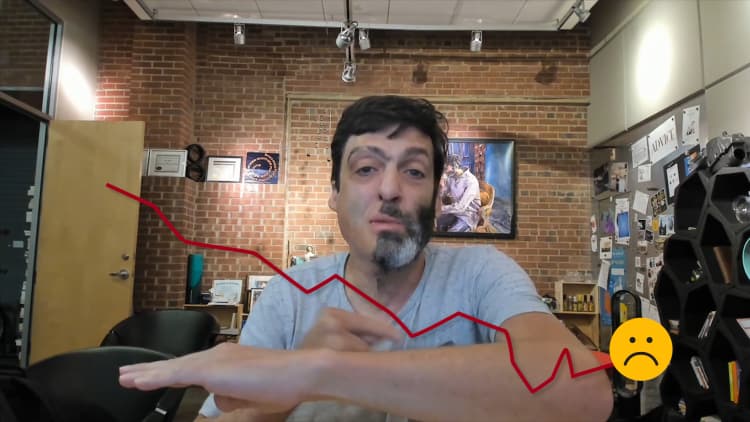The New York Stock Exchange has a backdoor safety valve it can use to freeze trading if a market sell-off turns grim, but Friday's plunge wasn't even close to the levels required to trigger such interventions.
Markets sank across the board on Friday, adding to a precipitous weekly sell-off, as investors punished risk assets after reports that the coronavirus continued to spread outside of China into the Middle East, Europe and North America.
Even as the Dow Jones Industrial Average fell more than 1,000 points and the S&P 500 slid 4% on Friday alone, each index remained well above the thresholds required to impose what NYSE calls "market-wide circuit breakers," a set of procedures the equities and options exchanges have at their disposal to halt cross-market trading.
As of this writing, the Dow's week-to-date decline totaled 4,150 points, or 14.3%; the S&P was down a similar 14%. But the exchange doesn't take into account multi-session moves when assessing whether to halt. The goal of it is to ensure orderly trading on a daily basis.
A cross-market trading halt can be triggered at three breaker thresholds that measure a decrease against the prior day's closing price of the S&P 500 index.
- Level 1 — The first halt begins if the S&P 500 falls 7% and lasts 15 minutes.
- Level 2 — The second halt begins if the S&P 500 falls 13% and also lasts 15 minutes.
- Level 3 — The third and final halt begins if the S&P 500 falls 20% and lasts the remainder of the trading day.
To be sure, marketwide halts are rare and are usually associated with broader economic fears of recession.
The last time the NYSE imposed a Level 1 halt occurred on Dec. 1, 2008, when the S&P 500 closed down 8.9% in one of the worst trading sessions of the last 15 years. The last time the S&P 500 fell more than 13% in a single session was on Oct. 19, 1987, when the market closed down more than 20% in a day now known on Wall Street as "Black Monday."
Regulators overhauled trade-clearing protocols and introduced the circuit breakers after that dramatic fall, meaning that U.S. investors have never seen a Level 2 or Level 3 halt.
Subscribe to CNBC PRO for exclusive insights and analysis, and live business day programming from around the world.



